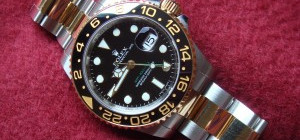 In many ways, cameras are as varied and unique as the people who use them. But in order to help you decide which models are potentially a good fit for you, I’ve grouped them into four basic categories. Here’s a quick summary of each one.
In many ways, cameras are as varied and unique as the people who use them. But in order to help you decide which models are potentially a good fit for you, I’ve grouped them into four basic categories. Here’s a quick summary of each one.
Compact - Compact cameras are perfect companions for vacationers, parents, and photographers constantly on the go. Because compacts fit easily into purses, backpacks, diaper bags, briefcases, and even shirt pockets, the odds are good that you’ll have a camera on hand as life unfolds before you. That’s why I recommend that all photographers should pack a compact, regardless of any other cameras they have in their arsenals.
These pint-sized wonders do have their trade-offs. The zoom lens typically tops out at 3x magnification, so your ability to “zoom in” tightly on distant subjects is limited. It’s also more difficult to add accessories to compacts, such as filters, auxiliary lenses, and external flashes.
Happily, though, megapixel power is no longer a trade-off for portability. Most compacts these days provide at least a 3-megapixel sensor, and 5-megapixel models have become commonplace. This is more than enough resolution for snapshots and moderate enlargements. Compacts usually cost less than $400.
Here’s a beginners’ guide on which camera you should consider for your needs:
[youtube http://www.youtube.com/watch?v=r-0AYH7bvvc]
Advanced amateur - For photographers who want professional capabilities but aren’t ready to commit to the costs and bulk that come with camera bags brimming with expensive gear, advanced amateur models are a satisfying compromise. These cameras are typically more compact than digital SLRs (see the description of professional cameras, next), yet often provide a variety of camera modes, powerful zoom lenses (up to 10 x), hefty image sensors (8 megapixels or more), and the capacity to accept a variety of accessories, including filters, auxiliary lenses, and external flashes.
Advanced amateur models often excel at capturing digital video in addition to still images, and they often have variable-angle viewfinders that allow you to hold the camera above your head or below your waist and still compose the picture. Finally, advanced amateur cameras often provide the option for RAW format image capture, which enables you to delay processing of the image until later, on your computer. Advanced amateur models range from $500 to $800.
Tip: Are you interested in a top photography school in the US? Read more here!
Professional - Just because you don’t earn your living taking pictures doesn’t mean you don’t want the capabilities that pros require in a camera. The star of this category is the digital single lens reflex (DSLR), which looks similar to the 35mm SLRs that pros and amateurs have been toting around for years.
DSLRs enable you to quickly switch from one type of lens to another by simply removing the lens from the camera body and attaching another. With dozens and dozens of optics to choose from, this provides tremendous flexibility. Another feature is that you compose your picture through the same lens that captures it. “What you see is what you get” with DSLRs.
Inside the camera body, manufactures have packed sophisticated electronics to enable you to capture pictures quickly (with virtually no shutter lag), in rapid sequence (burst modes of a dozen pictures or more are not uncommon), and with unparalleled image quality, both in terms of megapixels and noise reduction. RAW mode is a standard feature for DSLRs.
Often, you can add wireless external flashes, WiFi image-transfer capabilities, and a host of sophisticated accessories that include remote releases and macro lighting rigs. DSLRs start at around $900 and can quickly escalate to a few thousand dollars—and keep in mind that optics and accessories add to the bottom line.
Hybrid devices - As digital imaging components become smaller and more energy efficient, technology companies are able to incorporate them into ever more and different types of devices. You can now buy a mobile phone that also has megapixel picture-taking capabilities, and many digital camcorders include multi-megapixel sensors, memory cards, and even electronic flashes.
Most photographers would not rely on camera phones or digital camcorders as their primary picture-taking devices. But as the technology evolves, these tools can become useful additions to your ever-broadening arsenal of imaging devices.







